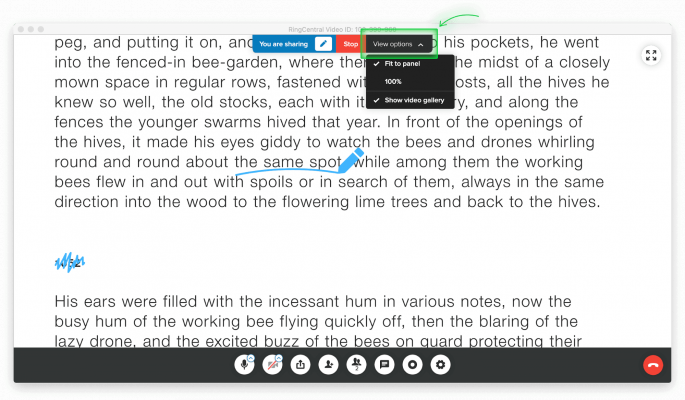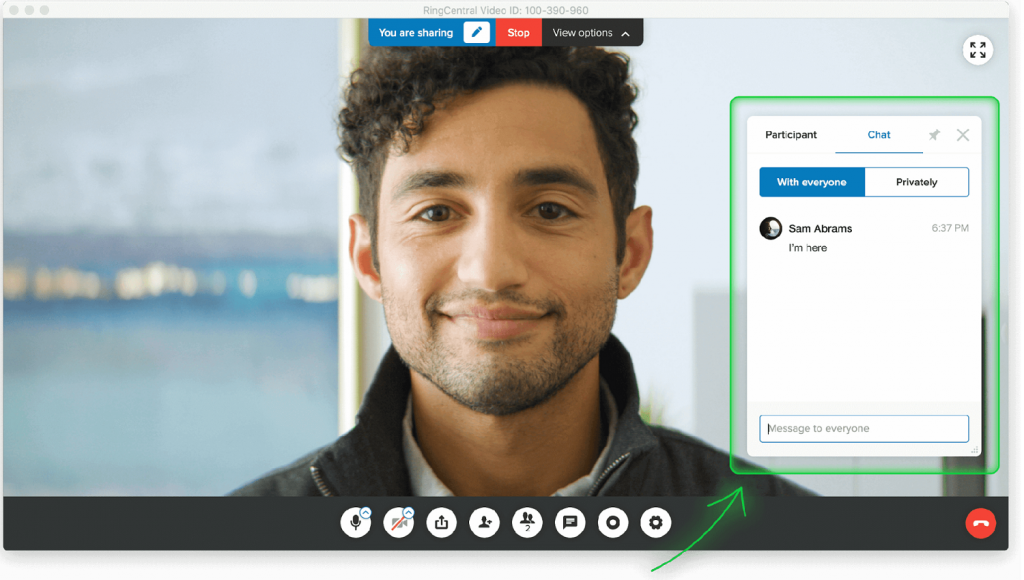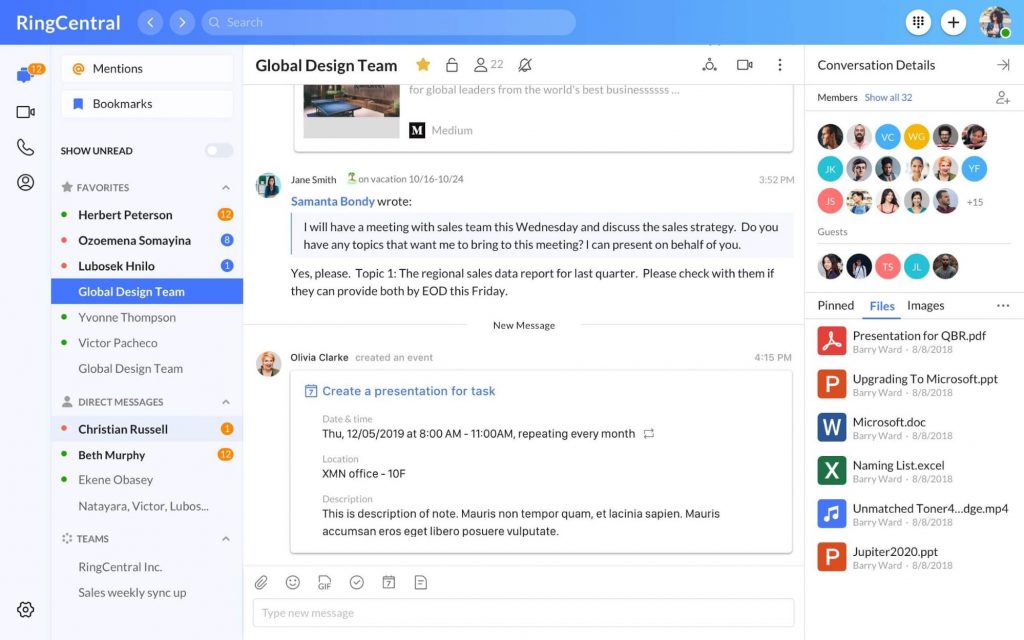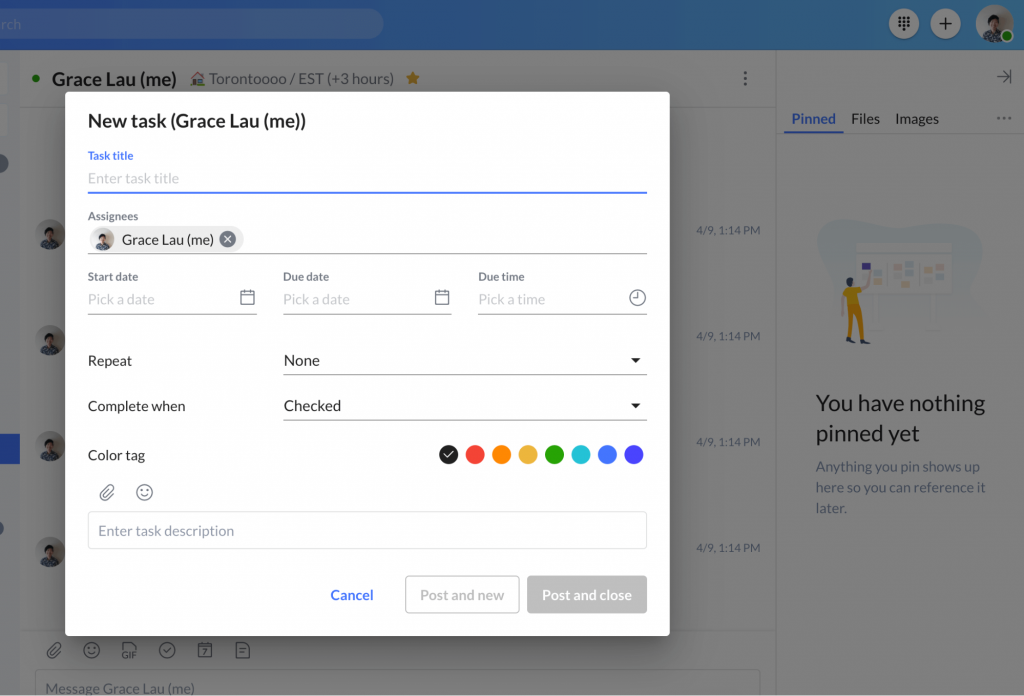Most schools have slogans that give their audience an idea of what they stand for and what they can offer potential students. In today’s virus-quarantined world, if you’re an educator, your slogan should read a bit like this:
It’s all happening, and it’s all online.
Punchy, right?
And yet not everyone is comfortable with the online classroom format. Even though there are thousands of schools where you can seek out an online education, there’s still something to be said for the interactiveness that a live classroom offers.
If you’re looking at virtual classroom options, make sure to have a strategic plan in mind and take the preferences of your learners into account. According to a survey from ReGenerations, only 2% of 18-to-24-year-olds want to attend college exclusively online, while nearly 3-in-4 want to study in-person post-coronavirus. How can you work within these expectations?1
The fact is, if students can go see the Mona Lisa in person, they would much prefer that over taking a virtual tour of the Louvre. But in a post-coronavirus world, a virtual tour still beats not seeing the museum at all.
It would be shortsighted to ignore the need for building engaging virtual classrooms. In a technologically advanced world, we don’t have to stop educating ourselves when geography (or even a global pandemic) stands in our way. In reality, the need to reimagine the classroom couldn’t be more necessary.
The Harvard Business Review reports that since the end of April of 2020, there were 10.3 million enrollments in courses on Coursera, up 644% from the same period last year.2
So now it’s time for educators to get creative and brush up on their digital classroom skills, because this format, while not yet a 100% replacement for the “real thing,” is not going anywhere. If you could offer an engaging online classroom experience that’s as good as (or better than) an in-person class, why wouldn’t you?
And what if we told you that it really isn’t that difficult?
If you have a computer with a camera (which most people do), you’re already on the right track to teach others online.
In this post, we’re going to help you become more confident in your understanding of how to set up a virtual classroom. Here’s what we’ll look at:
- What exactly is a “virtual classroom?”
- Virtual classrooms: techniques and class types
- The key benefits of having a virtual classroom
- 5 virtual classroom tools that benefit both teacher and student
- Setting up an interactive and engaging virtual classroom
What is a “virtual classroom?”
Like the name suggests, a virtual classroom is an online learning environment where experts can teach in their area of expertise to students hoping to learn a new skill.
These classrooms can be as formal as a collegiate professor teaching to doctoral students or as informal as a hobbyist taking a watercolor class. They can also include various technologies, like LED whiteboards or live video, that can contribute to the interactiveness and inclusivity of the online classroom, depending on the goals of the teacher.
Virtual classrooms: techniques and class types
Synchronous vs asynchronous
Now before we go deeper into creating a virtual classroom, let’s better understand what makes one truly interactive. (And a primer on virtual meeting etiquette probably wouldn’t hurt either.)
Look at Masterclass, the popular streaming service of classes taught by experts in their field. For a flat fee, you can learn photography from fashion photographer Annie Leibowitz or hear Billy Collins talk through the process of bringing poetry to life.
These classes are fantastic resources, but because they are asynchronous (as in they’re not live, but prerecorded) they’ll still ultimately lack the intimacy and interactiveness of a true classroom. To create a more interactive class, try to run it live and not prerecorded—you can still do it online, but it gives you the opportunity to answer student questions in real time.
Flipped classroom
The flipped classroom style creates more independence for students and the opportunity for more one-on-one time with the teacher and students. Most of the learning is done independently by students, often through pre-recorded videos, presentations, and reading set up by the teacher.
The live classroom environment is then a time to ask questions and take a more Socratic approach.
A style of teaching where the teacher is more of a supervisor who asks students how they came to their conclusions and guides them on how to process the information they consumed on their own time.
This is a great style for teachers who are instructing students on different levels of learning. More advanced students can be mixed in with beginner and intermediate students, and it allows the teacher to play more of a devil’s advocate role, allowing the discussions in the classroom to unveil the student’s overall needs and create a community of learning.
Massive open online courses (or MOOCs)
Yep. These are exactly what they sound like. These are courses open to anyone who signs up. Cost, accreditation, and whether or not classes are live all depend on the organization giving the course. They don’t provide an intimate set up or much classroom or teacher interaction, but students who don’t need that interaction might find this set up a good option. A few popular education companies that offer MOOCs are edX, Khan Academy, and Canvas.
Again, MOOCs are less intimate than a virtual classroom with “limited seating”, but if you’re hoping to educate a large group of people at once, a MOOC is one of the best ways to do it.
That said, a MOOC isn’t as immersive as the evolving classroom of today. You can’t engage with the teacher or the other attendees, so it’s best to consider these types of virtual classrooms as one-way experiences that you can watch, but not take part in. You’re not having the same classroom experience, and there’s no way to ask questions or participate.
The key benefits of having a virtual classroom
Higher cost-efficiency
The best part of the online classroom is, of course, the online part. There’s no need to find commercial real estate or desks, paying for utilities is a thing of the past, and there’s no commute. Most online classes have curriculum that’s software-based, so the need for physical books is often not necessary.
When there’s no overhead, that means more money in your pocket to make your course truly incredible, rather than fretting over heating a large building in the middle of winter. This way, your students are truly paying for you and your expertise (and not their parking spot).
More possibilities for distance learning
When you have an online course, the only thing students who aren’t in your time zone have to concern themselves with is showing up when the course starts. You could be teaching in Los Angeles but have students on the East Coast. Being able to learn from a particular teacher is now no longer limited due to geography.
Having students who are distance learners means that your classroom can also be larger and more diverse. Rather than catering directly to your region, you can open your course up to students from all over or even having two or more sessions where you might otherwise have only had one.
Equitability in the classroom
In a virtual classroom setting, it’ll be incredibly important to maintain equitability in each class, and when everything is online, that’s easier than ever. As long as the class starts and ends at the same time, the student can control where they learn best, making the classroom a place of maximum comfort and a place where they can best cater to their own learning styles.
Having a more controlled physical environment is helpful for younger students as well. The student’s guardian can help set their young learner up to succeed with physical requirements they may not have been given in a physical classroom. Being able to utilize a desk that allows a more hyperactive student to sit or stand, or a fidget spinner to quiet their hands will help keep their eyes on the screen but won’t be a distraction to their peers.
Students who are easily distracted can also change their video settings so that they can only see whoever is actively speaking. This helps with distractions that might have occurred in a live classroom—the student still gets the live classroom benefits without the distractions of what is going on around them.
How can you use online meeting platforms for e-learning?
Psychological safety
Take away the physical distractions of the traditional classroom and what do you get? No gum popping, principal drop-ins, paper rustling, weird smell distractions and an environment where students (as well as the teacher) can get. things. done.
A psychologically safe learning environment yields better learning outcomes, higher performance, better focus, and the opportunity for the teacher to create a space that is truly equitable, where everyone’s voice is heard equally. Feedback can become very personalized, and through the use of classroom management software, the feedback students receive are tailored to them and not just the overall class.
5 virtual classroom tools that make life easier for both teachers and students
There are armloads of both hardware and software tools that make the virtual classroom more engaging for students and teachers.
1. Digital whiteboarding and annotations
The ability to make virtual annotations is great for teachers who want to create a more interactive online classroom. It allows you to mark up documents and record what was written so that the notes, once erased, can be recalled again for further study:
Understanding how to use all the features in live video conferencing is one of the greatest tools that a teacher can use. Rather than lecturing at a screen the entire time, teachers can send students into breakout rooms to work out problems and discuss questions that they can then share with the class as a whole.
2. Screen sharing
Screen sharing is another important feature when you’re teaching a virtual class. It makes it easier for students to follow along and see what’s happening on your screen as you’re scrolling, highlighting, and pointing details out:
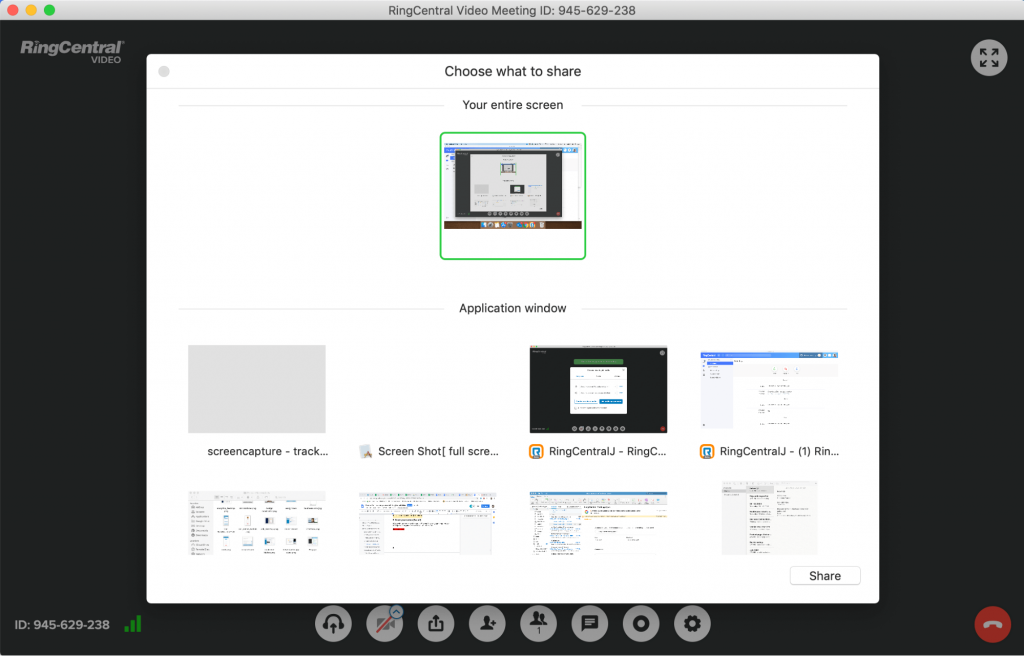
Screen sharing in RingCentral Video
3. Chat box
If you have students who are shy or still building up the confidence to speak up in class (it can still be intimidating even if it’s online), a chat box can be a useful way to get them to come out of their shell.
For example, in RingCentral Video, you can write messages to your entire class—or privately to a specific student to give them feedback:
4. Integrations with other education software
Whatever virtual classroom software you choose, one of your considerations should be whether it integrates with other education software you’re using.
For instance, RingCentral also integrates with Canvas, a learning management software, to let you schedule virtual office hours, see upcoming class meetings, and see which lessons have been covered (and which ones need more attention)—all directly in the Canvas dashboard:
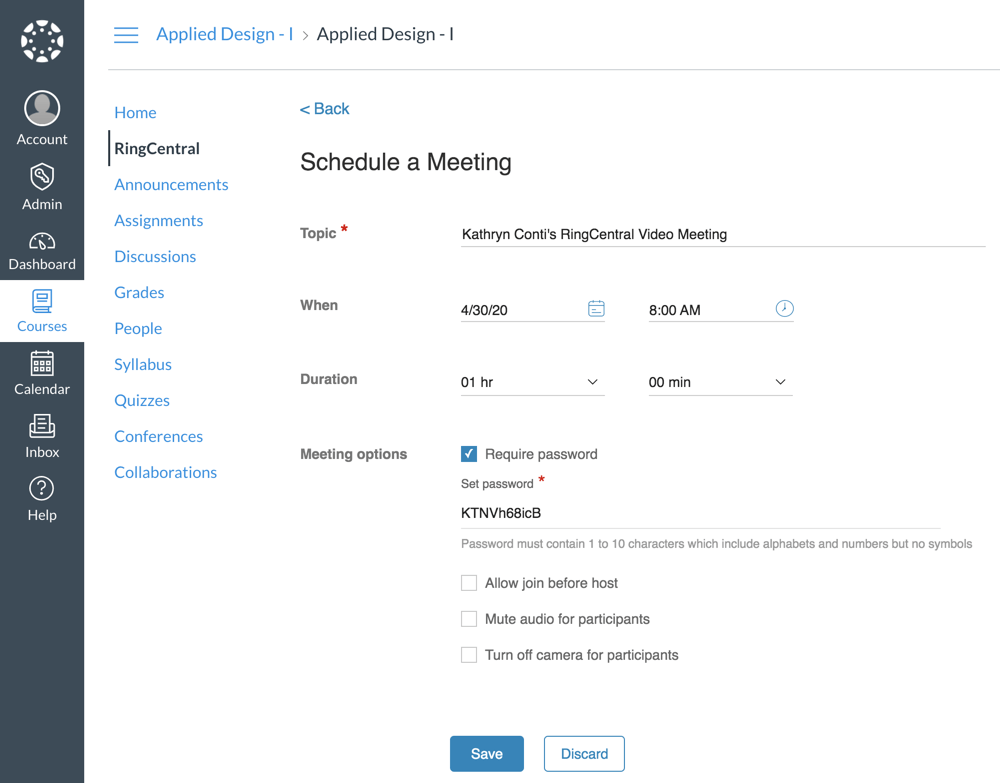
5. Real-time messaging
Once your online class is over, what happens if a student has questions? Virtual meetings typically only last an hour or two, so make sure to have other options for students to get in touch with you.
Having a class team chat thread would be helpful here. It lets you and your students message each other in real time, share files with each other…
… And even assign tasks to each other! The best thing is that this all happens in the same app as your video conferencing feature. (See that little video camera icon near the top left?)
Things to consider when setting up an interactive and engaging virtual classroom
So. We now know what a virtual classroom is, the different types and styles of classrooms, advantages of teaching online, and tools that can benefit both the online teacher and student.
What’s the next step to creating your online classroom—and making it interactive and engaging? Here are some things to consider:
—What demographic of students will be taking the class?
If your target demographic is young and tech-savvy, rolling out the red carpet of integrative software we outlined above not only might be something that your students enjoy, it’s also likely something they’ve come to expect.
If your demographic is less tech-savvy, on the other hand, start slow and let them have a chance to pick up the software at a more manageable pace.
—What are you hoping to teach?
Some subjects are more suited to certain types of software integrations. Think about how hands-on your class is and cater your software tools to the subject matter. Just because you have whiteboard capabilities doesn’t mean you’ll always need to use them—but it’s good to know it’s there if you do need it.
—What’s the best way to reach and communicate with your students?
If you’re teaching a virtual class, consider organizational and communication software integrations that’ll allow your students to feel connected to you even when your class isn’t meeting.
Whether you’re looking at video conferencing software, screen sharing apps, or communication tools that allow you to easily receive, critique, and resend student’s work back to them, find ways that allow for easy and efficient communication.
Ready to step into your virtual classroom?
There are so many tools out there that are designed for (or can be easily adapted to) what teachers need.
Understanding your student’s needs, your goals as a teacher, and what technology is available to you will help you create a learning environment that is creative, inclusive, and always ready to accept new ways to expand your knowledge of online learning.
1 re-generations.org/gen-z-covid-19-study
2 hbr.org/2020/05/higher-ed-needs-a-long-term-plan-for-virtual-learning
Originally published Jul 22, 2020, updated Aug 23, 2021


